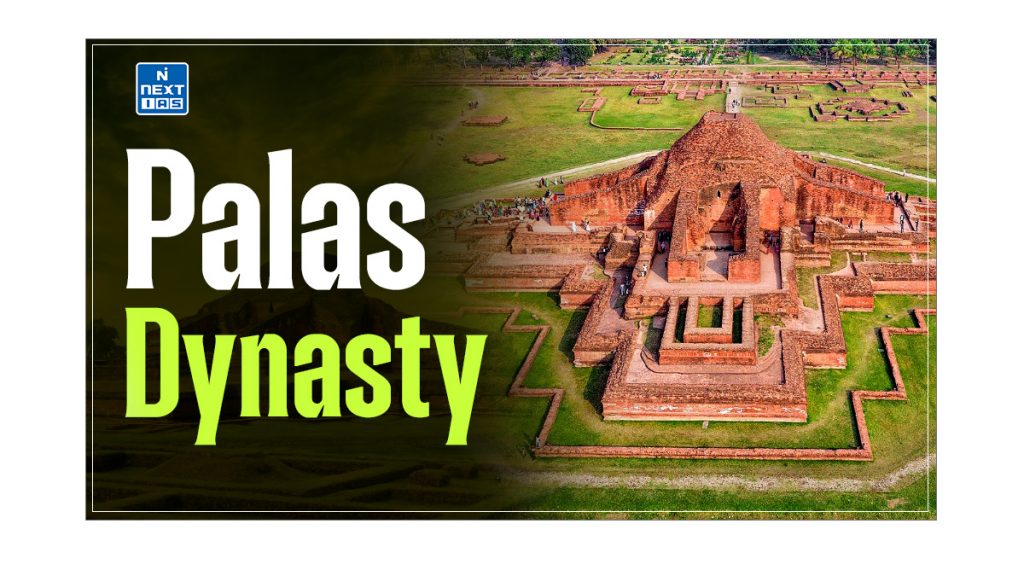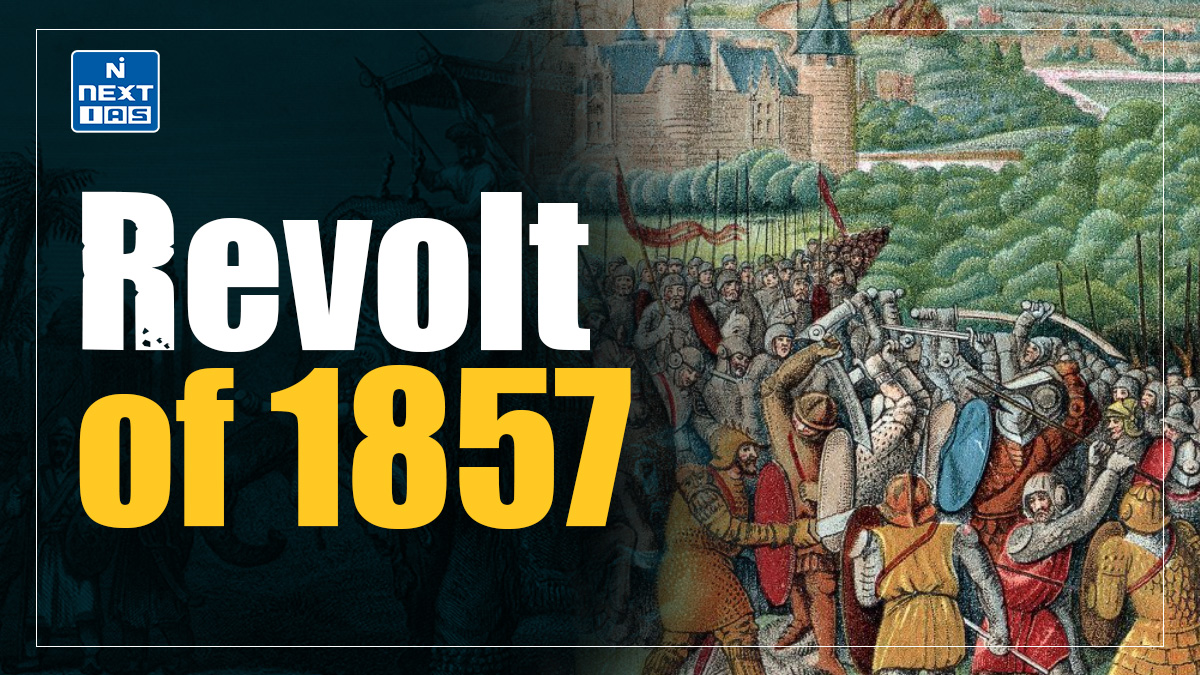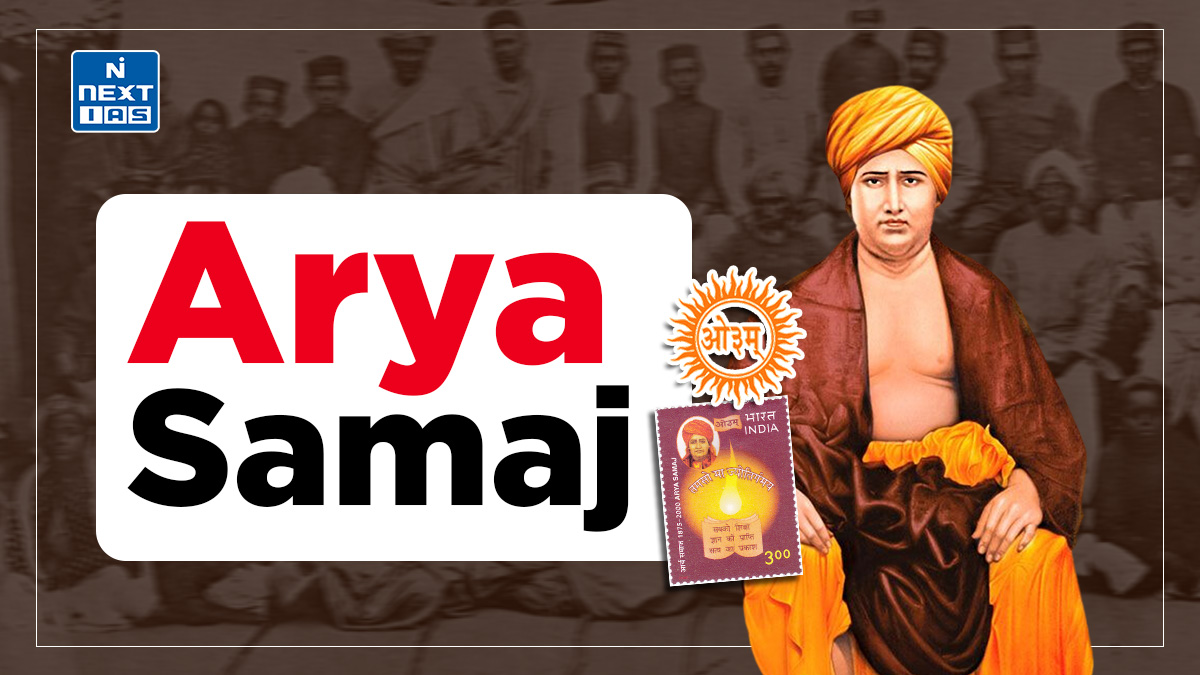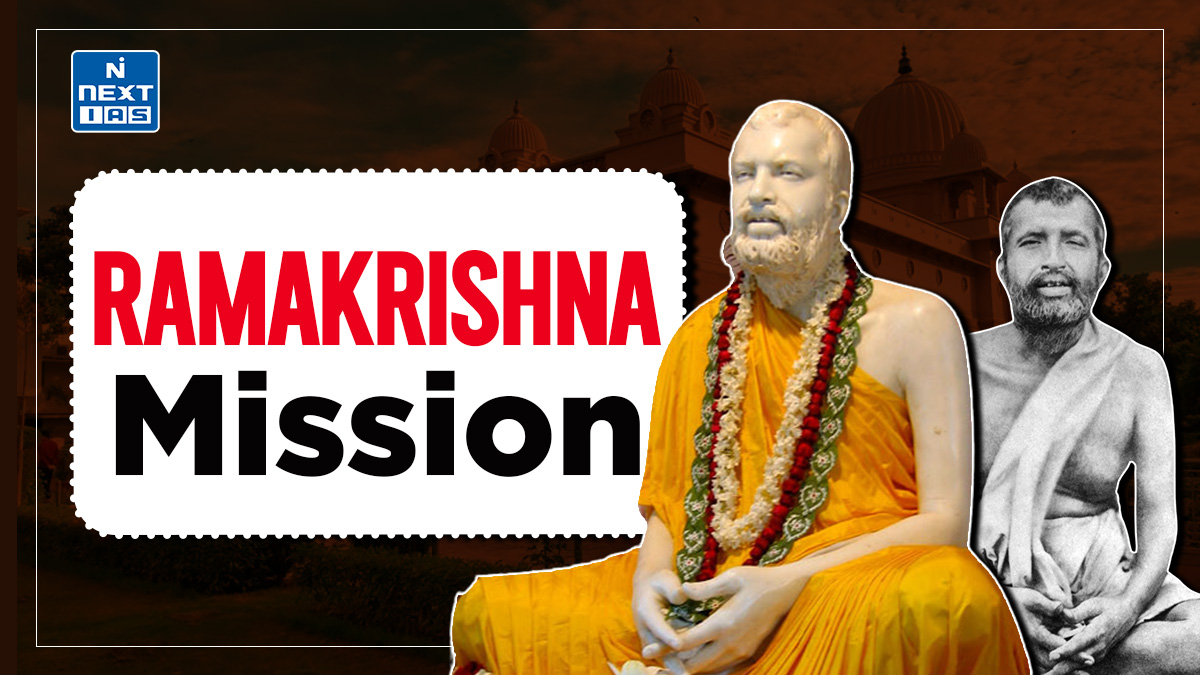
The Palas Dynasty was a powerful empire that ruled Bengal and Bihar from the 8th to the 12th century, known for its patronage of Buddhism and remarkable contributions to education, art, and architecture. Their reign significantly shaped medieval Indian culture and established Bengal as a prominent learning centre. This article aims to study in detail the origins, rulers, administration, religion, economy, literature, and art of the Palas Dynasty, along with its lasting legacy.
About Palas Dynasty
- After the death of Gauda King Shashanka, Bengal experienced a period of chaos and confusion for almost a century.
- The internal disorder made Bengal vulnerable to external invasion. To end the prevailing anarchy, leading Gauda members met at an assembly and elected Gopala as their king.
- Thus, Gopala (also Known as Gopala-I) became the founder of the famous Pala dynasty of Bengal around 750 AD.

Rulers of Palas Dynasty
- The Pala Dynasty, which ruled over the Bengal and Bihar regions from the 8th to the 12th century, was founded by Gopala in 750 CE through a democratic election by local chiefs.
- Gopala, the first ruler, established stability in the region. His successor, Dharmapala, expanded the Pala Empire significantly, gaining control over much of northern India and playing a crucial role in supporting the rise of Buddhism, mainly through establishing the Vikramashila and Nalanda universities.
- Dharmapala was followed by his son Devapala, who consolidated the empire’s power and extended its influence over Assam, Odisha, and parts of central India.
- After Devapala, the Pala dynasty witnessed a decline, although rulers like Mahipala I managed to restore some of the dynasty’s former glory.
- The last significant ruler, Ramapala, tried to revive the dynasty’s fortunes, but after his death, the Pala Empire weakened and was eventually overtaken by the Sena Dynasty.
- Throughout their reign, the Pala rulers were known for their patronage of Buddhism and contributions to art, architecture, and education.
Political Sphere of Influence of Palas Dynasty
- Dharmapala succeeded Gopala-I and was known as the ablest of the Pala rulers. He had a tremendous military brain and conquered many States.
- He even dethroned the reigning prince of Kannauj and set up his nominee. His long and glorious reign lasted for almost 30 years.

- Like his father, Devapala was a vigorous ruler. He fought successfully against the Huns and the Gurjara-Pratihara king of Kannauj.
- His territories included the vast region from Kamboj in the north to the Vindhyas in the south. The king of Sumatra also sent an ambassador to his court.
- The death of Devapala marked the beginning of the end of the Pala dynasty.
- Though his successor, Mahipala, tried to maintain control over the territories, the successor kings were weak and gradually succumbed to pressure from neighbouring kingdoms.

Polity & Administration of Palas Dynasty
- The Pala rule was monarchical, with the king being the centre of all the power.
- Pala kings generally adopted imperial titles like Maharajadhiraja, Parameshwara and Paramvattaraka.
- The Pala kings also appointed Prime Ministers to administer the kingdom better.
- Administratively, the Pala Empire was divided into several Bhuktis (Provinces). Bhuktis were divided into Vishayas (Divisions) and Mandalas (Districts).
- The smaller units were Khandala, Bhaga, Avritti, Chaturaka, and Pattaka. Thus, the administration covered widespread areas from the grassroots level to the imperial court.
Religion of Palas Dynasty

- The Pala kings patronised the Mahayana branch of Buddhism. Gopala-I was a devout Buddhist who built the famous monastery at Odantapuri.
- His son, Dharmapala, made the renowned Buddhist philosopher Haribhadra his spiritual guide.
- He established the famous Vikramashila monastery (located near Bhagalpur, Bihar) and the Somapura Mahavihara in Bangladesh.
- After his death, Devapala restored and enlarged the architecture at Somapura Mahavihara, which featured several themes from the epics Ramayana and Mahabharata.
- Mahipala I carried on the restoration work and ordered construction and repairs of several sacred structures at Bodh Gaya, Sarnath and Nalanda.
- Apart from Buddhism, the later Palas also supported the Shaiva ascetics. Narayana Pala himself established a temple of Shiva and patronised the Brahmins.
- Besides the images of the Buddhist deities, the images of Vishnu, Shiva and Sarasvati were also constructed during the later rule of the Pala dynasty.


Economy of Palas Dynasty
- The reign of Palas was marked by general economic and material prosperity.
- Agriculture was the main occupation during the Pala period.
- The Pala kings granted land to farmers for cultivation, and the people’s chief source of income was the agricultural products of the land.
- During this period, paddy cultivation became Bengal’s chief source of economy. This was mentioned in the ‘Monghyr (Munger) inscription’ of Devapala and the ‘Bhagalpur inscription’ of Narayanapala.
- Apart from agriculture, mineral resources were also important constituents of the economy during the Pala period. Though the use of iron ore was still not very extensive, yet the process of smelting ore was well known to the people of Bengal.
- Copper deposits and pearls were also found in the various parts of the Pala Empire.
- Agro-based industries thrived during the Palas’ reign in Bengal. The textile industry flourished during the Pala period, and cotton textiles were the principal industry in Bengal.
- The silk industry was also very popular in Bengal during this period, and it catered not only to the domestic but also to the foreign market.
- Though the economy flourished during the Pala phase, trade and commerce declined generally. The decline in trade standards is evident from the coins of the Pala period.
- The scarcity of gold and silver coins led to dependence on copper coins, which resulted in a drastic decline in foreign trade.
- Consequently, the economic system became entirely dependent on agriculture, and the flourishing agrarian economy gave rise to a feudalistic society. Thus, it could be said that the agricultural economy and feudalism developed simultaneously during the Pala’s reign.
Literature of Palas Dynasty
- Pala Kings patronized several Sanskrit and Buddhist scholars, some of whom were also appointed as their officials.
- The Gauda riti style of composition was developed during the reign of Palas.
- During their rule, many Buddhist Tantric works were authored and translated. They have a distinct influence even today in the Tibet region.
- Jimutavahana, Sandhyakar Nandi, Madhava-kara, Suresvara and Chakrapani Datta are some of the significant scholars from the Pala period.
- The first signs of the proto-Bengali language can also be seen in the Charyapadas composed during the Pala rule.
Art and Architecture of Palas Dynasty

- The sculptural art of the Pala period is recognised as a distinct phase in Indian art. It is famous for displaying the artistic genius of Bengal sculptors.
- It was largely influenced and inspired by the Gupta art. As discussed earlier, the Buddhist Palas built a number of monasteries and other sacred structures.
- The Somapura Mahavihara in present-day Bangladesh has been given the status of a World Heritage Site.
- The gigantic structures of other Viharas, including Vikramashila, Odantapuri, and Jagaddala are other masterpieces of the Palas.

- The temples constructed during the Pala period depicted a distinctive vanga style.
- The Siddheshwara Mahadeva temple at Barakar in Burdwan district is one such fine example of early Pala style.
- Terracota sculpture was very popular for decorative purposes. In painting, murals were highly popular for wall paintings.
- Miniature paintings also showed considerable development during this period.
Conclusion
The Pala Dynasty was indelible on India’s socio-political and cultural landscape. Its rulers played a pivotal role in the revival of Buddhism, fostered the growth of art and architecture, and maintained a strong agrarian economy. Despite facing eventual decline and being overtaken by the Sena Dynasty, the Palas’ contributions, particularly in education and religious tolerance, continued to resonate across centuries. Their legacy lives on through the remnants of their architectural marvels and their profound influence on India’s cultural and intellectual history.
Frequently Asked Questions (FAQs)
What was the Pala Dynasty Capital?
The capital of the Pala Dynasty was Nalanda, which was also home to the famous ancient university.
Pala Dynasty was founded by?
Gurjara Pala founded the Pala Dynasty.
Who is the last ruler of the Pala Dynasty?
The last ruler of the Pala Dynasty was Ramapala.





